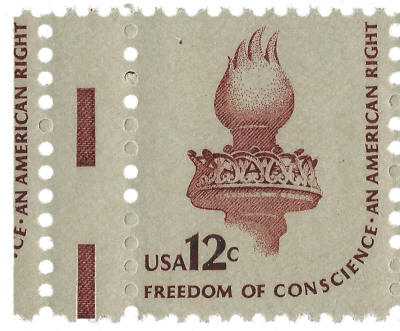
Gauge
The number of perforations every 20mm on a sheet of perforated stamps. For example a perf 12 gauge stamp has 12 perforations every two centimeters (20mm). Note that 20mm is just shy of the width of the design of many definitive stamps.
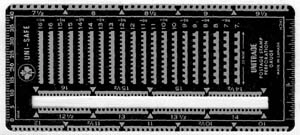
Ghost tagging
The appearance of a faint image impression in addition to the normal inked impression. This is caused by misregistration of the phosphor tagging in relation to the ink.

Glassine
A glassine is a translucent envelope with an open end and a fold-over flap.
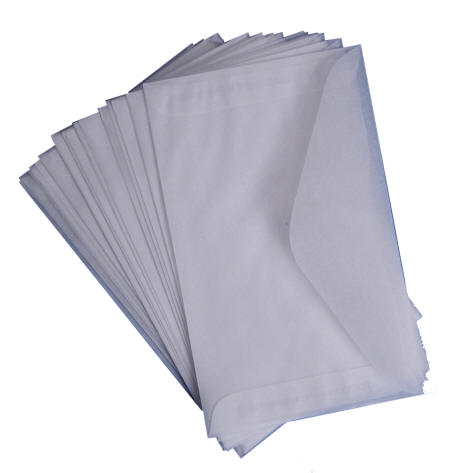
Glassine Surfer, The
A column in the American Philatelic Society's monthly magazine about stamp collecting and the Web. It later evolved into a now-defunct web of same name.
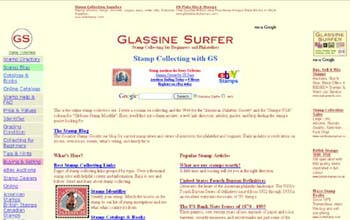
Goldbeater's skin
A thin durable translucent paper used on stamps like the 1886 issue of Prussia. Gum is sometimes applied over the printing. Removing these type stamps from the paper to which they are affixed is very difficult.
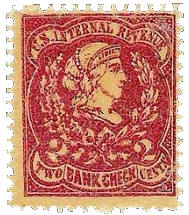
Government Coil
Coil stamps produced by the U.S. Post Office Department, primarily the BEP, as opposed to privately perforated coil stamps. The first government coils were issued in early 1908, made from the regular issues of the 1902 Series.
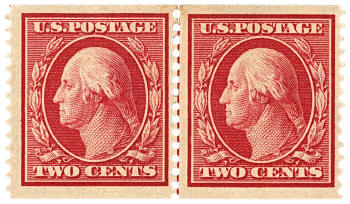
Granite paper
A paper type that contains small colored fibers as a deterrent against forgery.
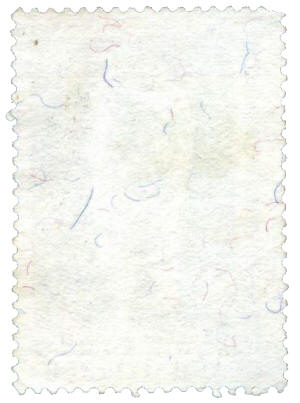
Gravure
Gravure is an intaglio printing process utilizing a printing plate created by photographic and chemical means, rather than by the more traditional engraving by hand.
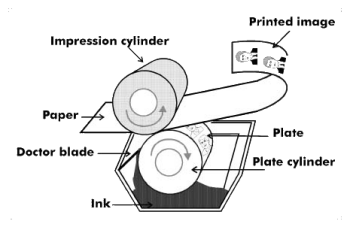
Gridiron Cancels
Gridiron cancels are rows of parallel lines enclosed in a circle, common on the 19th century US stamps.

Grill
A grill is a security device consisting of a waffle-like pattern of raised ridges intended to break the paper fiber of stamps in the hope that the cancellation ink would be more completely absorbed and thus harder to wash out.

Gripper Cracks
Cracks that formed over slots cut in the edges of the engraved plates curved to fit the rotary press cylinders at the spot where the clamps held the plates to the cylinders.
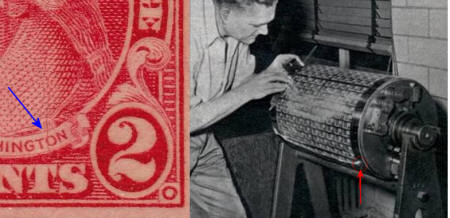
Guide Dot
A dot on the engraved plate or transfer roll used as a guide in the spacing and alignment of stamps as the siderographer entered the subjects on the plate.
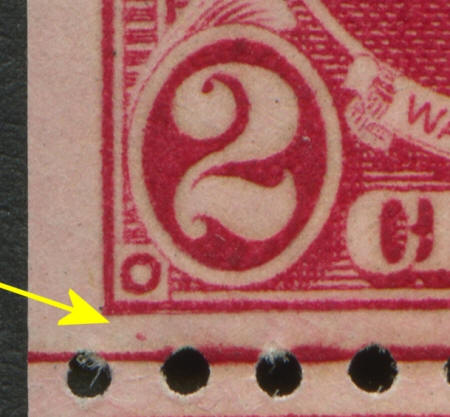
Guide Line
A vertical or horizontal line, or both, inscribed on a plate, usually running through the center, used as a guide for operators of perforating machines or as an indication of the point of separation of the sheet into panes. Note that guide lines are NOT the same as joint lines. The example at right further demonstrates the fact that the imperforate stamps with genuine guidelines can be used to manufacture a guideline coil pair. Thus a genuine guideline is no guarantee that a coil pair is genuine.

Guide Line Block
A guide line block, or simply "line block", is a block of stamps with a guideline dividing the stamps.
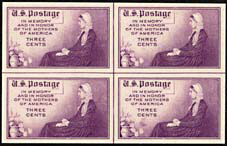
Guide Line Pair
An attached pair of flat plate stamps with a guideline between them. This term is most commonly used in association with coil stamps, although it is sometimes used with flat plate imperforate pairs. Guide-line coil pairs usually bring a premium over pairs without a guideline. Note that a guideline was deliberately placed on the flat plate sheets and is found only on flat plate stamps. A joint-line is found on rotary press stamps.
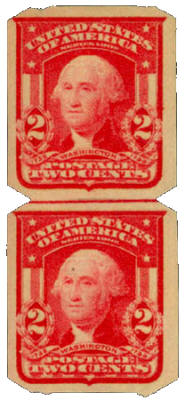
Gum
The adhesive applied to the back of stamps that enables a stamp to be affixed to an envelope when moistened. The presence and level of disturbance of the gum is often of great importance in the determination of the value of a stamp. It has been said that never hinged gum is the most valuable substance, pound for pound, on this planet. Sometimes gum is added to a stamp, called regumming, in an effort to deceive collectors into thinking the stamp is the more valuable stamp. For investment purposes there is nothing like the never hinged stamp with full gum. However, the presence of gum does have its detractors. Its presence may crack, stain and possibly harm the paper of the stamp itself, possibly even destroying the stamp over time. For this reason there is a growing movement among collectors to abstain from the practice of collecting the never hinged stamp, even to the point of collecting stamps with no gum. In 200 years, these collectors may be heroes, since their stamps may be reasonably fresh, while the never hinged stamps may have deteriorated beyond collectibility.

Gum Breakers
Gum breakers are horizontal or slightly diagonal impressions across the backs of stamps made by physically "breaking" the gum to reduce the curling of the sheet stamps.
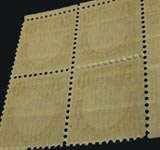
Gum Crease
A gum crease is a naturally occurring crease or creases found on flat plate stamps most often caused by movement and subsequent cracking of the gum in the drying process. Gum creases are often seen on early airmail stamps, including the Zeppelins. Stamps of these issues without gum creases bring a premium.
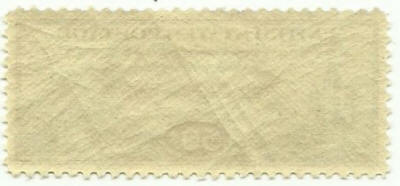
Gum Skip
A gum skip is a naturally occurring spot on a stamp to which no gum had adhered during the gumming process, as opposed to a gum thin in which gum is removed in the process of handling the stamp.
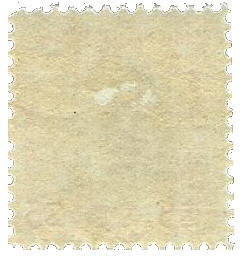
Gutter
Gutters are spaces left between panes of stamps on a printed sheet, often containing markings to aid in the perforation process. Not all sheets of stamps have a gutter space between the panes. Note that gutters are the spaces between panes and not the outside sheet margins.

Gutter Block
A gutter block is a block of stamps that contains stamps from two or more panes and the gutter or gutters between them. Gutter blocks are interesting in that they are generally not available, since sheets are normally cut into panes before distribution. Gutter blocks are available only when a sheet is purchased intact with the panes unseparated, as with the Farley's Follies.
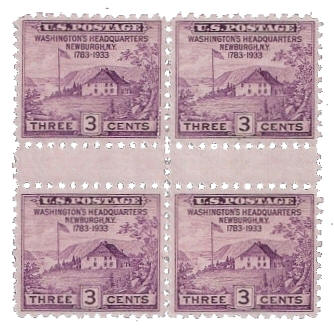
Gutter Pair
A gutter pair is similar to a gutter block, but with only two stamps separated by a gutter.

Guttersnipe
A gutter snipe occurs when the pane is improperly cut leaving the entire gutter and occasionally a portion of the adjoining stamp and perforations. A guttersnipe should be regarded as an "error", whereas gutter blocks and pairs are the naturally occurring result of leaving the sheet intact.
